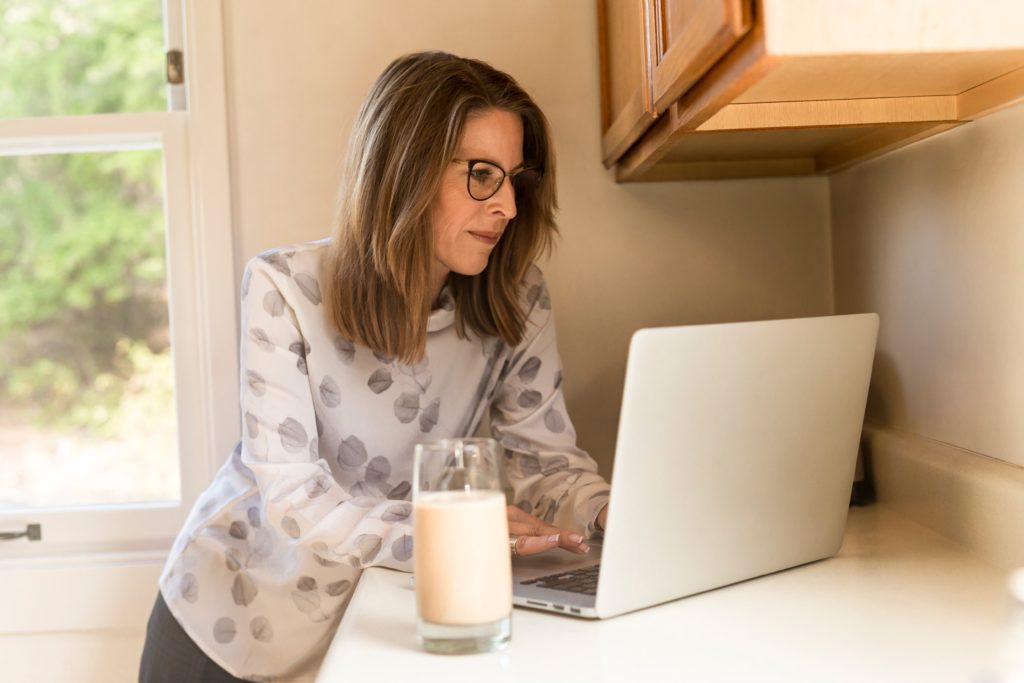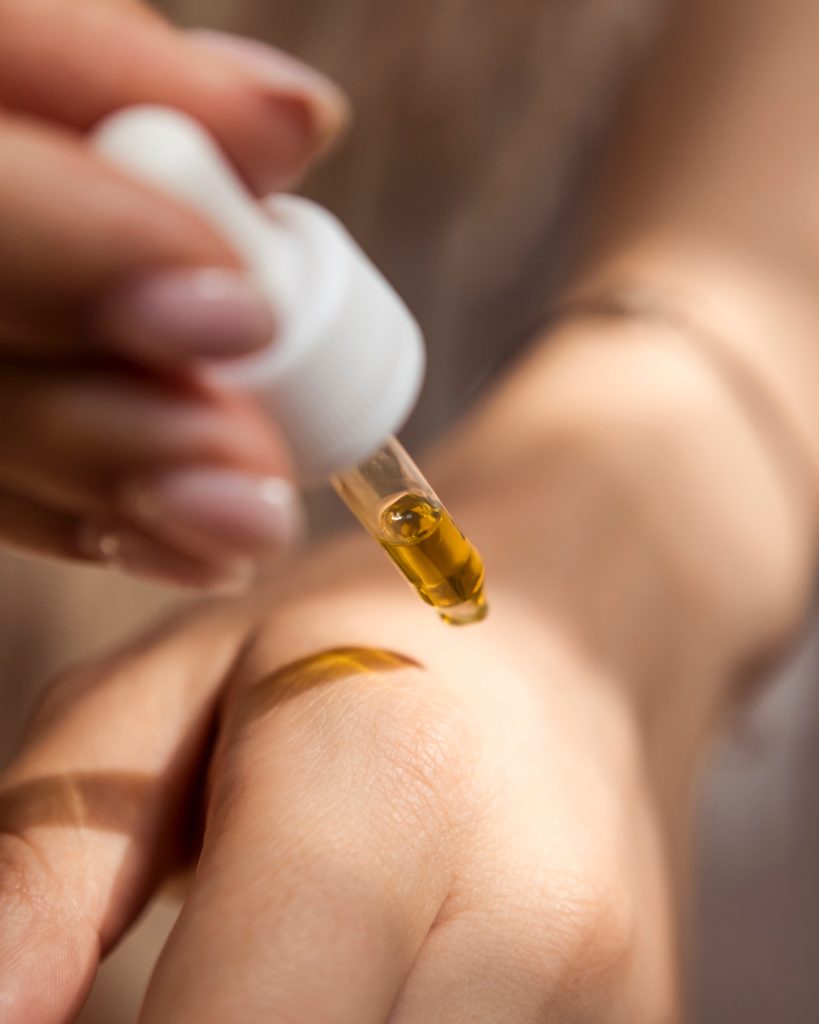Searching for acne cures? You’re not alone.
The American Academy of Dermatology estimates up to 85% of people between 12 and 24 have experienced this unpleasant condition at least once, and adult acne rates are rising.
If you’re one of the millions experiencing acne you may be asking what can be done to fix chest pimple problems.
Fortunately, we can identify the triggers of chest acne more readily than ever before, and it’s totally possible to blast those blemishes. Learn how to care for and clear up your acne-prone skin today.
What causes chest acne?
As you probably know, acne doesn’t simply stay on the face, but can sneak down onto the chest or turn into “bacne.” No matter where acne is, there are some standard causes for it that can trigger an outbreak.
As a dermatologist, I typically focus on finding the trigger for acne before deciding how to treat it. If we can deal with the cause, we can prevent future outbreaks, improving self esteem and daily life.
The only thing better than successfully treating acne is the peace of mind knowing you’ve dealt with the source.
There are several types of acne blemishes that may present:
- Cysts
- Pimples
- Pustules
- Blackheads
- Whiteheads
Each of these looks different, but all are caused by hair follicles clogged with dead skin cells and excess oil. However, as we’ll cover, they may need different treatments.
So, what could cause chest acne? There are quite a few sources:
-
- New skincare: Notice a breakout on your chest after trying a new lotion, cleanser, or exfoliating with a different product? Making changes to your daily skincare routine, especially if your products aren’t non-comedogenic, can disrupt and clog pores.
- Changing body products: Maybe you switch over to heavier body lotions and moisturizers during the colder months, or just liked the smell of a different body wash. Started wearing sunscreen after reading enough skincare articles? These minor tweaks can all trigger body acne.
- Skipping showers: It’s recommended that you wash acne-prone areas once to twice daily including after any exercise or sweating. Avoiding regular bathing gives dead skin cells, bacteria, dirt, and oil (called sebum) a chance to build up and create zits.
- Laundry loopholes: Something as seemingly innocent as new laundry detergent can trigger an outbreak, especially if it is heavily scented and filled with dyes and chemicals.
- What you’re wearing: Tight clothing, or fabrics that don’t allow the skin to breathe, can trap dirt and sweat close to the skin and develop papules or other blemishes.
- Being rough with your skin: Exfoliating too often, picking or popping zits, using rough washcloths or sponges, and using irritating products can all cause dry skin or scarring, making severe acne worse.
- Dietary dangers: Sugar, processed foods, and dairy, as well as a high-glycemic diet, have been linked to acne outbreaks. The inflammation that these can cause also piles onto an already-inflamed face.
- Hormones: Hormonal changes are often at the bottom of acne outbreaks. In fact, shifting hormone levels are why teens are more likely to get a pimple.
- Stress: Stress messes with your body in many ways, and higher levels of stress have been correlated to more severe acne, especially in young men.
- Poor sleep: Studies have shown that getting enough sleep can not only balance hormones, but also decrease acne. If you’re getting less than 8 hours a night, your sleeping patterns may be behind the breakouts.
After reading this list, it’s easy to see that the cause of your acne can indicate how to move forward with treatment. Many of my acne patients are surprised when, after a few minutes of talking, we can identify the cause of their outbreaks.
So, once we’ve found the culprit behind chest acne, what comes next? Well, in today’s market, you have a multitude of options in how to treat your chest acne.
13 Remedies to Banish Chest Acne
Chest acne is tricky to treat because it’s a delicate area, so be gentle as you give it the attention and treatment that it deserves. Here are some of the top remedies to banish chest acne:
Lifestyle Changes
This is where I like to begin, because these adjustments will change your life, not just your skin. As you may know, I believe skincare is a holistic issue.
- Nutrition: Clean eating with plenty of fruits, vegetables, proteins, and unprocessed foods can make a big difference in your acne. Avoiding sugar and dairy will also remove dietary triggers for acne. Here’s how I recommend eliminating dairy.
- Sleep: Work to get a full 8 hours of sleep nightly, avoiding caffeine and screens before bedtime. You may also benefit from trying aromatherapy.
- Stress: I recommend reducing stress through mindfulness, taking intentional time to rest, and even minimal exercising to balance hormones (but remember to shower afterwards)!
- Picking: Picking can be a nervous habit or even a compulsion, but being sure to stop picking can have a major positive impact on scarring, further outbreaks, and reducing oil and clogging in the pores.
Over-The-Counter Options
Changing your skincare routine to become more acne-friendly is a great option. Here are the most common over-the-counter options for chest acne:
- Salicylic acid: products with salicylic acid penetrate into the pores, exfoliating and breaking down dead skin cells clogging the pores. This option is best for blackheads and whiteheads, not cystic acne, and can also reduce scarring.
- Benzoyl peroxide: this is an antibacterial agent that attacks bacteria causing acne and exfoliates to remove oil and dead skin cells. This option is best for bigger zits as well as blackheads and whiteheads.
Natural Supplements
- CBD oil: Mixing CBD oil with a carrier oil like jojoba or rosehip seed oil can have an acne-fighting and anti-inflammatory effect. Ingesting CBD regularly may also prevent future breakouts. Basically, if inflammation from diet, new products, or picking is a main trigger, you might want to give this a try. For more information, click here.
- Probiotics: The skin has a microbiome, and acne can really throw it off. Probiotics help maintain the balance of good bacteria on the skin and in the gut. If stress, diet, and sleep are affecting you, taking probiotics may help, and you can also apply them topically as a spot treatment to the skin.
- Niacinamide: This form of vitamin B3 may assist in clearing acne by regulating oil production and act as an anti-inflammatory agent. One study found it to be as effective as a prescription antibiotic for acne, and it can also help prevent scarring.
Prescriptions and Procedures
Your dermatologist can work with you to diagnose the cause of your acne and what prescription medications may help to clear your severe acne. These may include:
- Retinoids: A more serious treatment, prescription retinoids remove dead skin cells and dry the skin, allowing other products to penetrate more deeply and preventing clogged pores. They can also be used to help treat acne scars.
- Antibiotics: In cases of bacterial overgrowth, these can kill excess skin bacteria, fight inflammation, and reduce red inflammatory papules.
- Hormones: If a hormonal issue is to blame, there are treatment options that can help address them naturally and with prescriptions.
- Laser therapies and chemical peels: Some procedures try to kill bacteria and turn over a new layer of skin quickly.
It’s important to note that the timeline for treating acne may not be what you think. After deciding on a treatment plan, you will be re-evaluated in two to three months. Here’s why: it takes about 1 month to see the results from a new layer of skin, and you will need two to three new skin layers to see the deeper change in the skin.
In re-evaluation, you may discuss how you liked the treatment, if you were able to stick with it, and how the results are looking. From there, you can continue treatment or adjust your methods.
Reducing Acne Scars
Beyond the retinoids, salicylic acid, niacinamide, and ending skin picking mentioned above, there are several other options available for reducing acne scars. A dermatologist may write a prescription for azelaic acid, which helps to lighten some of the dark spots that can persist after breakouts of large pimples.
If scarring is a major concern, it’s best to speak to a dermatologist directly so you can formulate a plan to improve the marks left behind by your chest acne.
Is it time to see a dermatologist?
Scheduling an appointment with your board-certified dermatologist is advised if you answer yes to any of these questions:
- Do you think you may need prescriptions?
- Would you like professional help to assist in identifying the potential source(s) of your acne?
- Would you like to discuss ideas on reducing scars?
- Would you like help to design a healthier lifestyle and treatment strategy based on your individual case?
Also, if your chest acne is ongoing, severe, or affecting your quality of life, schedule a consultation for your acne treatment.
In Summary
- Chest acne is an extremely common condition that can be caused by a number of lifestyle choices, hormonal imbalances, diet, or even new products.
- Thankfully, there is a wide array of options in treating acne, including lifestyle adjustments, over-the-counter options, natural supplements, and prescriptions/procedures available through your dermatologist.
- Salicylic acid, niacinamide, reducing picking and popping, and retinoids can all aid in reducing scarring from severe acne.
- If your social life, self-esteem, or comfort levels are suffering as a result of acne, see a dermatologist today and start regaining control of your health and happiness.
Sources
- Fabbrocini, G., Cacciapuoti, S., & Monfrecola, G. (2018). A qualitative investigation of the impact of acne on health-related quality of life (HRQL): development of a conceptual model. Dermatology and therapy, 8(1), 85-99. Full text: https://www.ncbi.nlm.nih.gov/pmc/articles/PMC5825329/
- Mukhopadhyay, P. (2011). Cleansers and their role in various dermatological disorders. Indian journal of dermatology, 56(1), 2. Full text: https://www.ncbi.nlm.nih.gov/pmc/articles/PMC3088928/
- Maybhate, C. (2005). Skin Care for Acne-Prone Skin. Ayurveda Holistic Community, 1-5. Full text: https://www.ncbi.nlm.nih.gov/books/NBK279208/
- Kucharska, A., Szmurło, A., & Sińska, B. (2016). Significance of diet in treated and untreated acne vulgaris. Advances in Dermatology and Allergology/Postȩpy Dermatologii i Alergologii, 33(2), 81. Full text: https://www.ncbi.nlm.nih.gov/pmc/articles/PMC4884775/
- Yosipovitch, G., Tang, M., Dawn, A. G., Chen, M., Goh, C. L., Chan, Y. H., & Seng, L. F. (2007). Study of psychological stress, sebum production and acne vulgaris in adolescents. Acta dermato-venereologica, 87(2), 135-139. Abstract: https://www.ncbi.nlm.nih.gov/pubmed/17340019
- Bilgiç, Ö., Bilgiç, A., & Altinyazar, H. C. (2016). Relationship between sleep quality and facial sebum levels in women with acne vulgaris. Indian Journal of Dermatology, Venereology, and Leprology, 82(3), 313. Abstract: http://www.ijdvl.com/article.asp?issn=0378-6323;year=2016;volume=82;issue=3;spage=313;epage=314;aulast=Bilgi%E7
- Schubert, M. M., Sabapathy, S., Leveritt, M., & Desbrow, B. (2014). Acute exercise and hormones related to appetite regulation: a meta-analysis. Sports medicine, 44(3), 387-403. Abstract: https://www.ncbi.nlm.nih.gov/pubmed/24174308
- Arif, T. (2015). Salicylic acid as a peeling agent: a comprehensive review. Clinical, cosmetic and investigational dermatology, 8, 455. Full text: https://www.ncbi.nlm.nih.gov/pmc/articles/PMC4554394/
- Bowe, W. P., & Logan, A. C. (2011). Acne vulgaris, probiotics and the gut-brain-skin axis-back to the future?. Gut pathogens, 3(1), 1. Full text: https://www.ncbi.nlm.nih.gov/pmc/articles/PMC3038963/
- Shalita, A. R., Smith, J. G., Parish, L. C., Sofman, M. S., & Chalker, D. K. (1995). Topical nicotinamide compared with clindamycin gel in the treatment of inelammatory acne vulgaris. International journal of dermatology, 34(6), 434-437. Abstract: https://www.ncbi.nlm.nih.gov/pubmed/7657446



